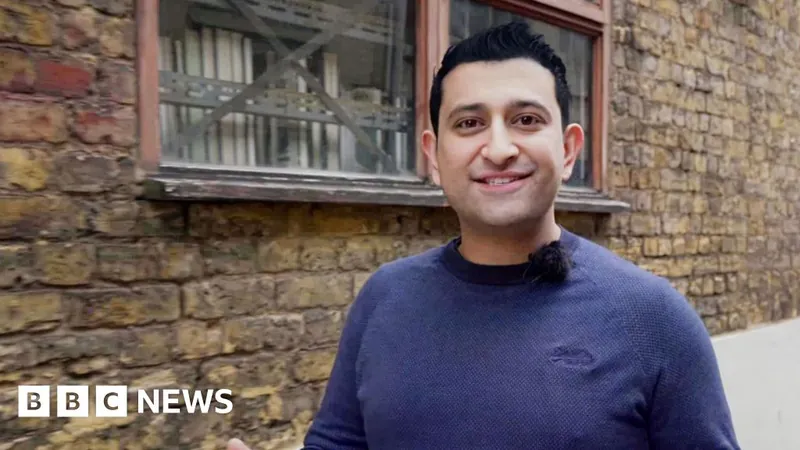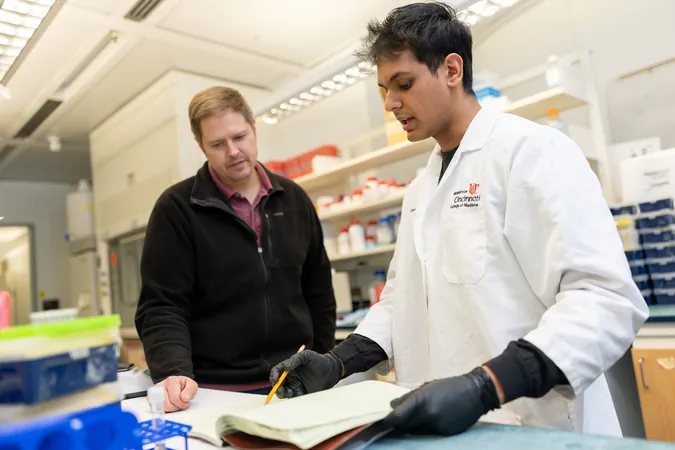
Revolutionary Green Software: Is Your Old Device About to Get a Second Life?
2024-10-25
Author: Jia
In an age where technology seems to rapidly outpace our wallets, actor and presenter Waseem Mirza found himself frustrated after being forced to upgrade his perfectly functional phone. Despite being reliable, his Samsung device fell victim to the all-too-familiar plight of being abandoned by its manufacturer when security updates ceased in 2020. “It feels as though the manufacturer is forcing you to upgrade, even when your battery and screen are still in great shape,” he lamented.
Mirza's dilemma is one many face today: the financial burden of upgrading combined with the environmental consequences of electronic waste. About 80% of the carbon emissions associated with mobile phones stem from their production, a reality that emphasizes the importance of prolonging a device’s lifecycle rather than contributing to the growing e-waste problem.
Enter /e/OS
A pioneering operating system that serves as a lifeline for devices that manufacturers no longer support. This open-source alternative to Android not only keeps old devices alive but significantly reduces their carbon footprint. Waseem Mirza's aging phone is among 200 models that can benefit from this green solution. With /e/OS installed, his device could extend its life by an impressive five years beyond what the manufacturer would offer.
Gaël Duval, the founder of /e/OS, highlights the initiative's importance: “We empower users by keeping their devices updated with crucial security patches while rendering the software lighter. This means increased efficiency for older devices, combating the bloatware struggle that often slows them down.”
Larger Manufacturers Adapting
Larger manufacturers are catching on, too. For instance, Samsung has committed to providing seven years of support for its latest Galaxy S24 devices, similar to Google’s promise for its Pixel series. Apple isn't far behind, offering at least five years of support for the iPhone 16. Experts predict these advancements can make newer phones usable for significantly longer, thanks to improved processor architectures and larger memory.
Green Software Initiatives
But it’s not just about keeping older devices alive. The software running on our servers is also ripe for a green revolution. Asim Hussain, from the Green Software Foundation, points out that energy efficiency often takes a back seat during server application development due to the lack of data on power consumption. However, the newly established Software Carbon Intensity (SCI) specification provides a method to measure a software's carbon footprint, offering a score that developers can reference to reduce emissions.
“The SCI is a game-changer, allowing developers to track their progress towards more sustainable software solutions,” Hussain stated. This initiative takes a comprehensive approach, taking into account both the operational emissions and the embodied carbon of the hardware.
Strides in Carbon Calculation
Despite the challenges in calculating these scores, there are strides being made. The Green Software Foundation has introduced the Impact Framework—a tool to estimate carbon emissions based on server resource usage.
To further empower developers, the ecoCode project is cataloging “code smells”—indicators that signal resource inefficiencies within code. Tariq Shaukat, CEO of Sonar, observes, “Our collective focus is to make software as lean and efficient as possible, reducing unnecessary burden on resources.”
The commitment to green software transcends individual developers; organizations such as Kainos are training their teams in sustainable practices. Director Peter Campbell noted, “While educating our staff and clients about green software practices is vital, changing the organizational culture to prioritize sustainability presents its own set of hurdles.”
Conclusion
In conclusion, the quest for greener technology is not merely about choosing more sustainable devices but extends into how we use and adapt our existing technology. As innovative solutions like /e/OS gain traction, users like Waseem Mirza may soon find that their old devices can enjoy a long and efficient second life. So, why upgrade when your trusty phone might just be on the brink of a revival?



 Brasil (PT)
Brasil (PT)
 Canada (EN)
Canada (EN)
 Chile (ES)
Chile (ES)
 Česko (CS)
Česko (CS)
 대한민국 (KO)
대한민국 (KO)
 España (ES)
España (ES)
 France (FR)
France (FR)
 Hong Kong (EN)
Hong Kong (EN)
 Italia (IT)
Italia (IT)
 日本 (JA)
日本 (JA)
 Magyarország (HU)
Magyarország (HU)
 Norge (NO)
Norge (NO)
 Polska (PL)
Polska (PL)
 Schweiz (DE)
Schweiz (DE)
 Singapore (EN)
Singapore (EN)
 Sverige (SV)
Sverige (SV)
 Suomi (FI)
Suomi (FI)
 Türkiye (TR)
Türkiye (TR)
 الإمارات العربية المتحدة (AR)
الإمارات العربية المتحدة (AR)